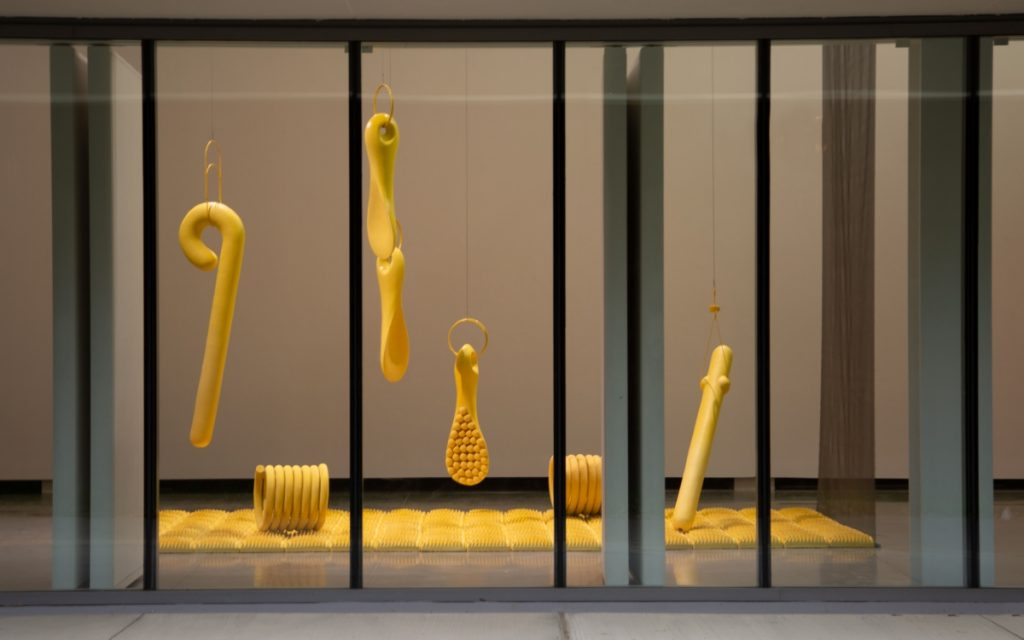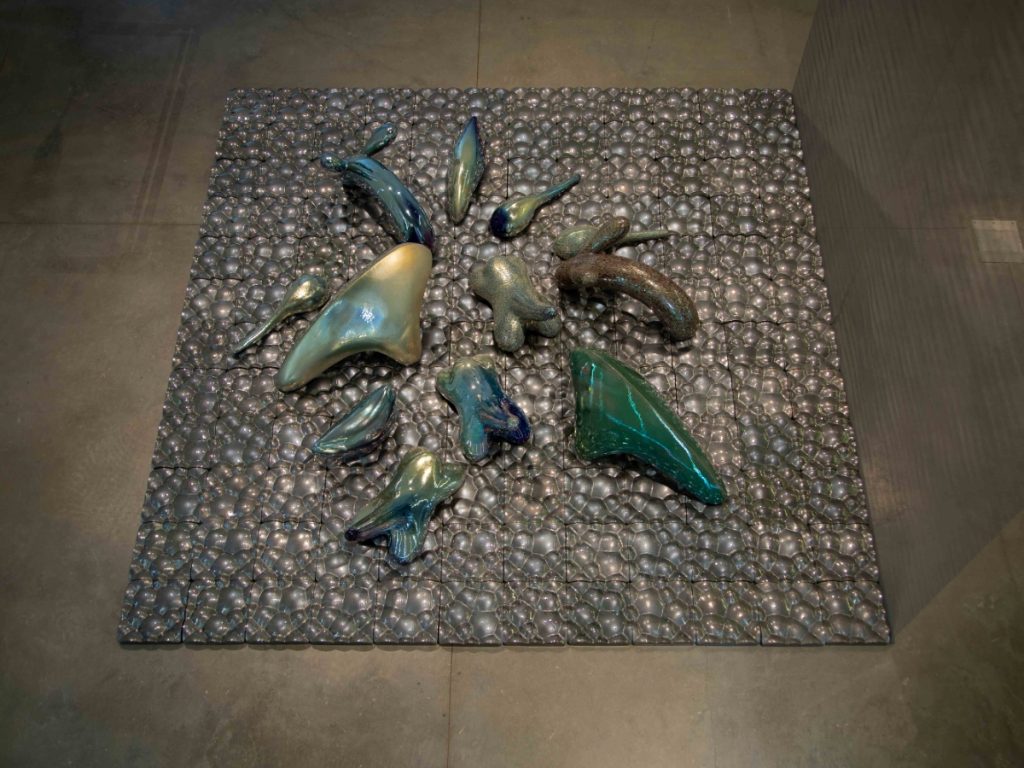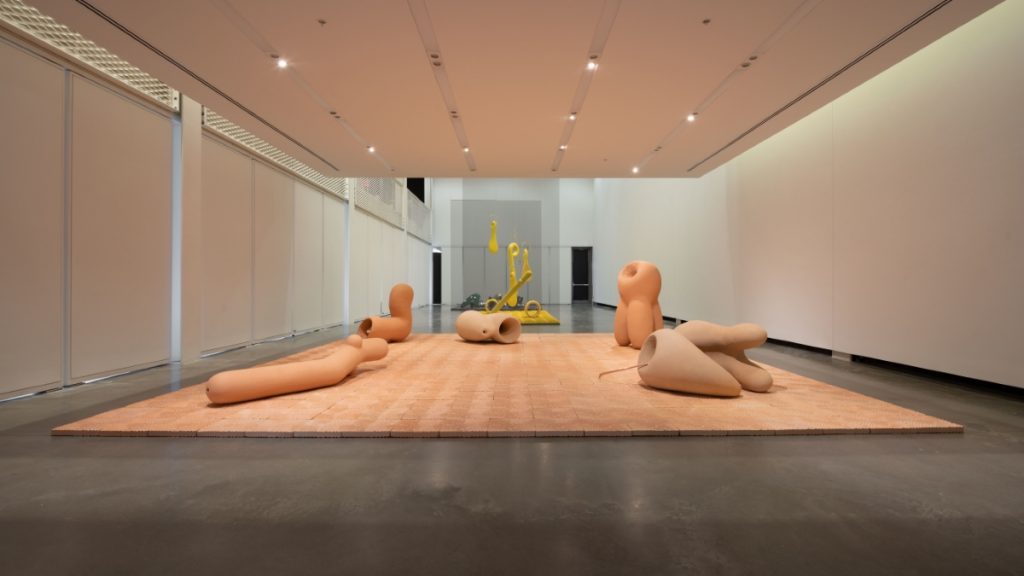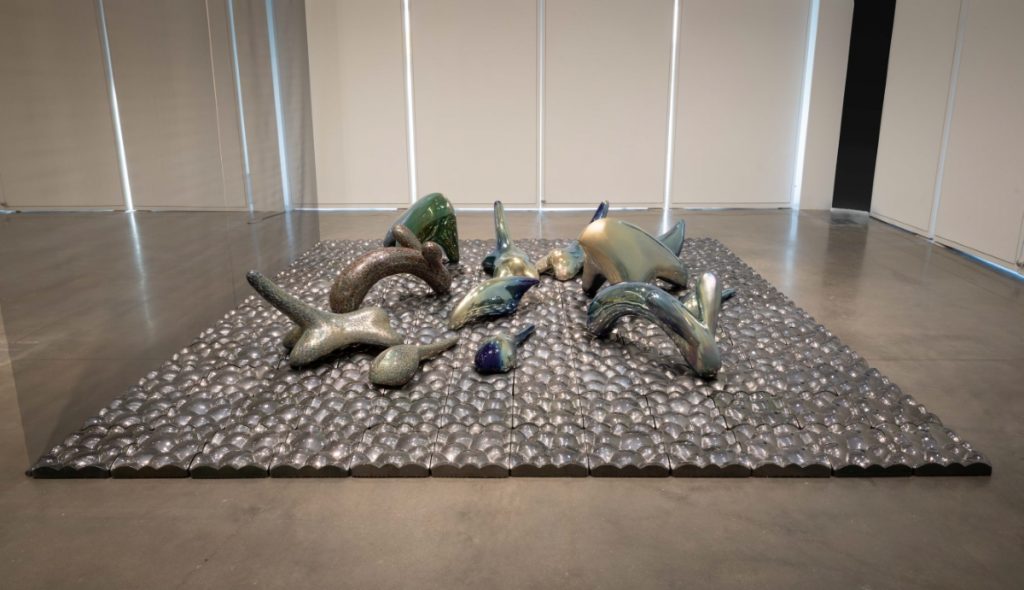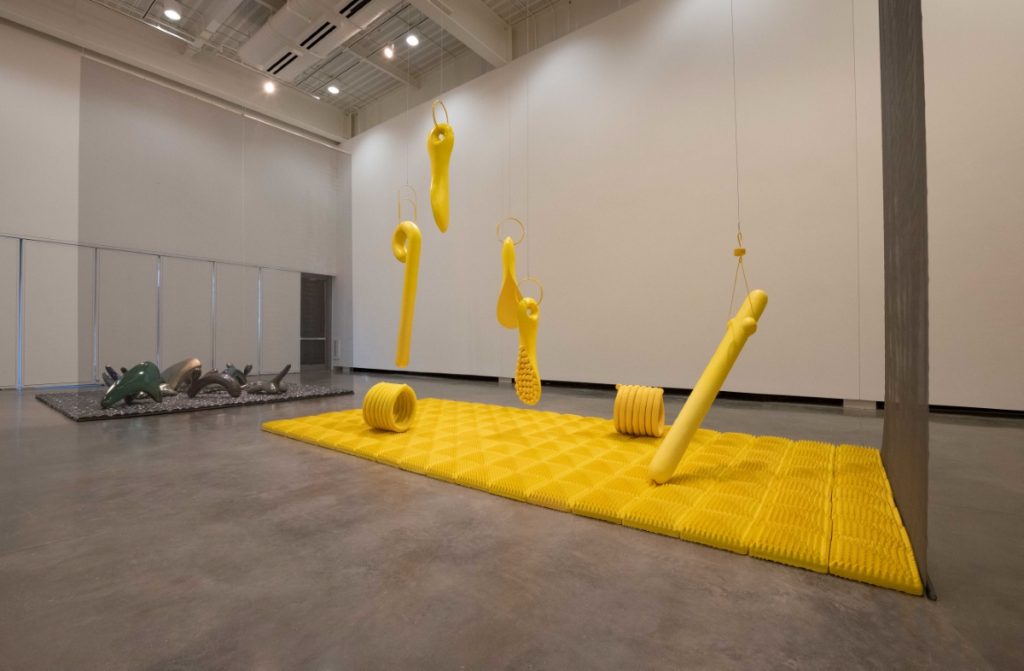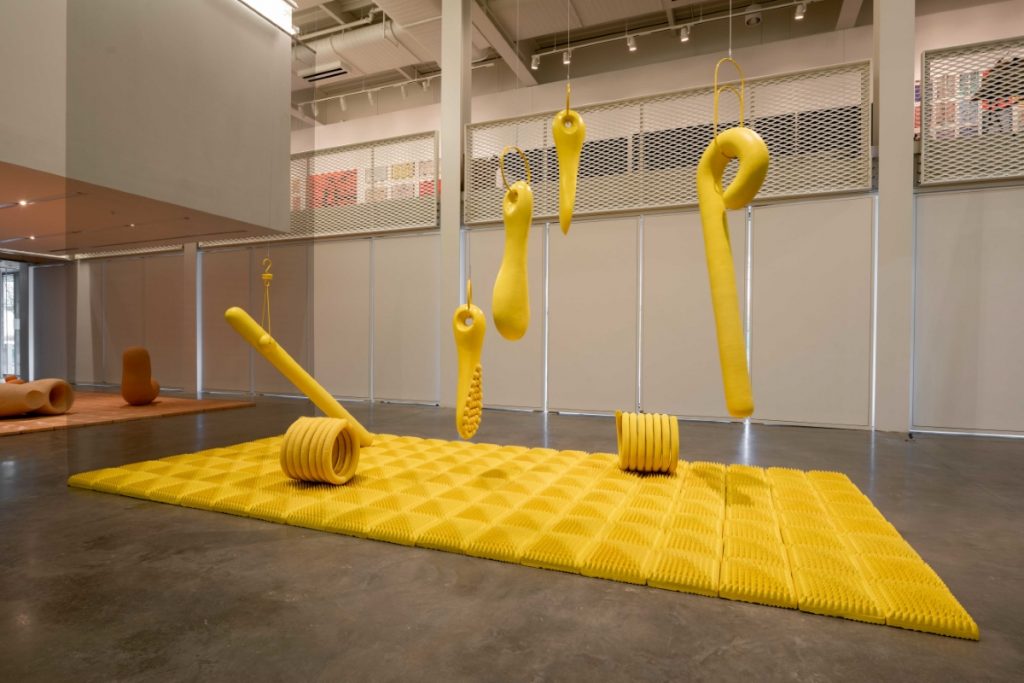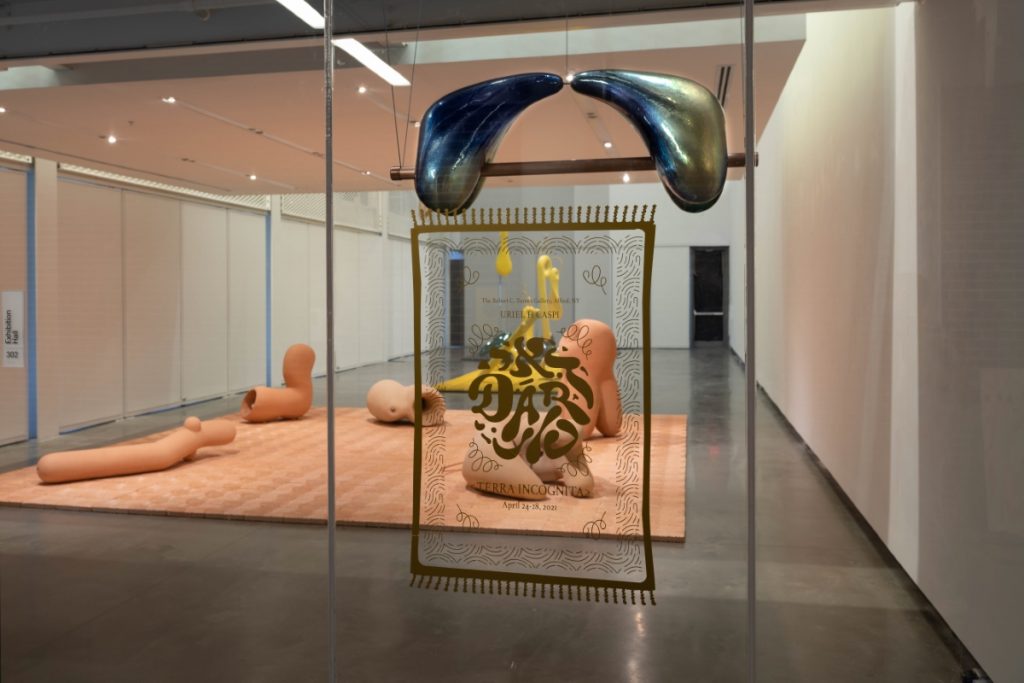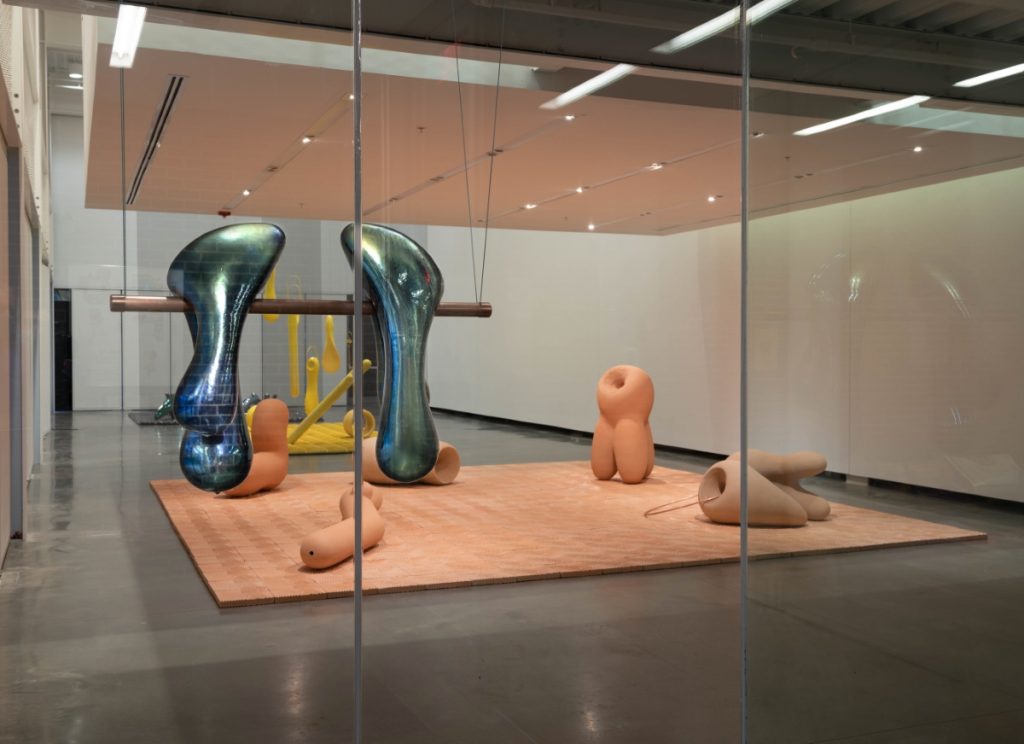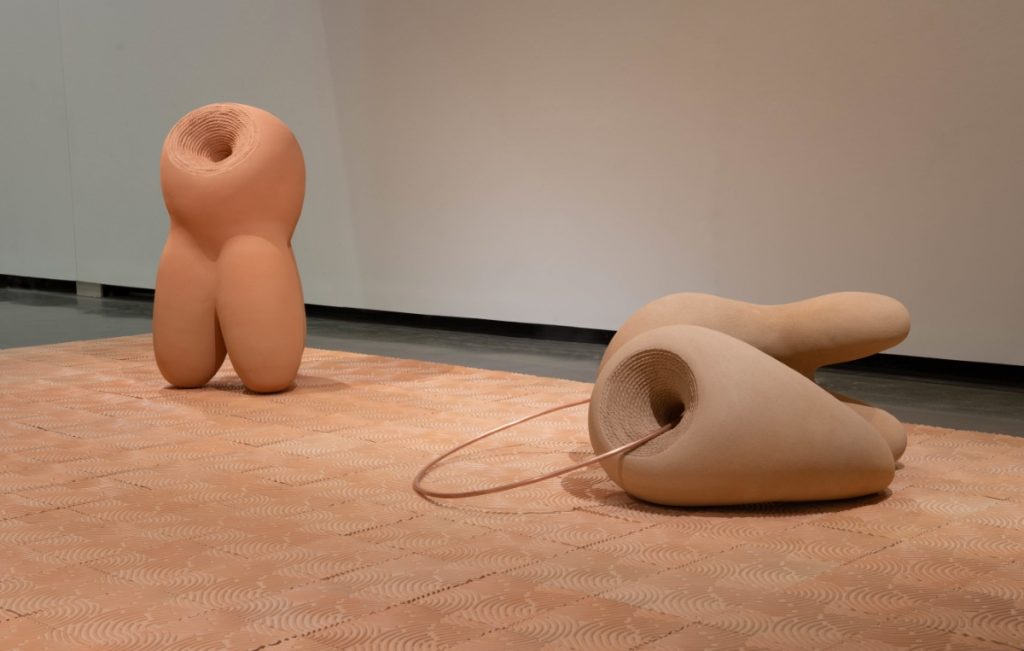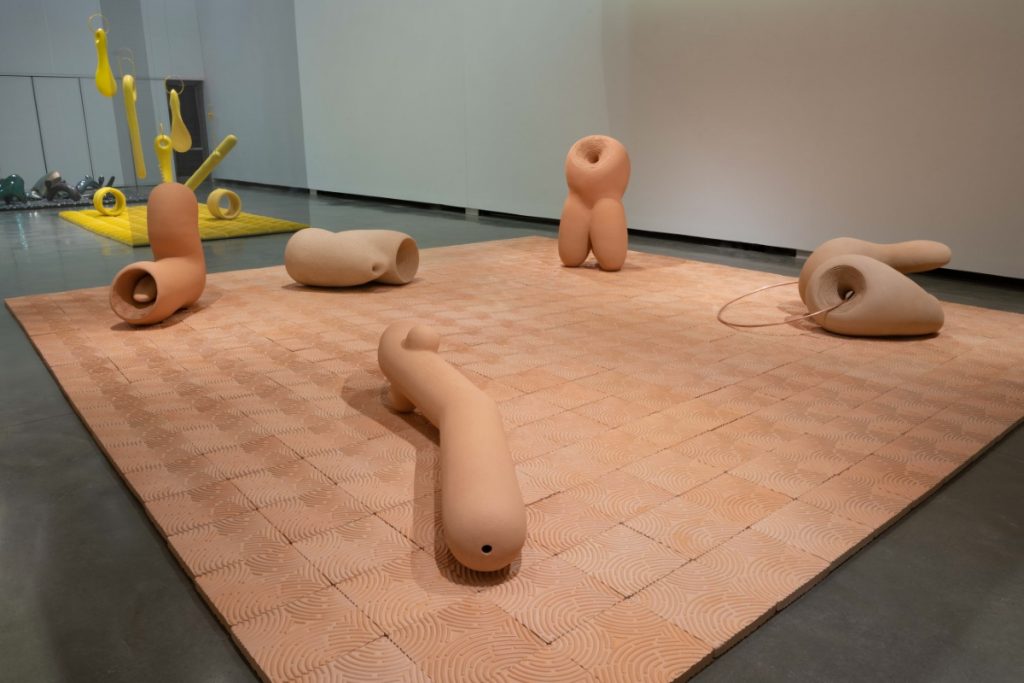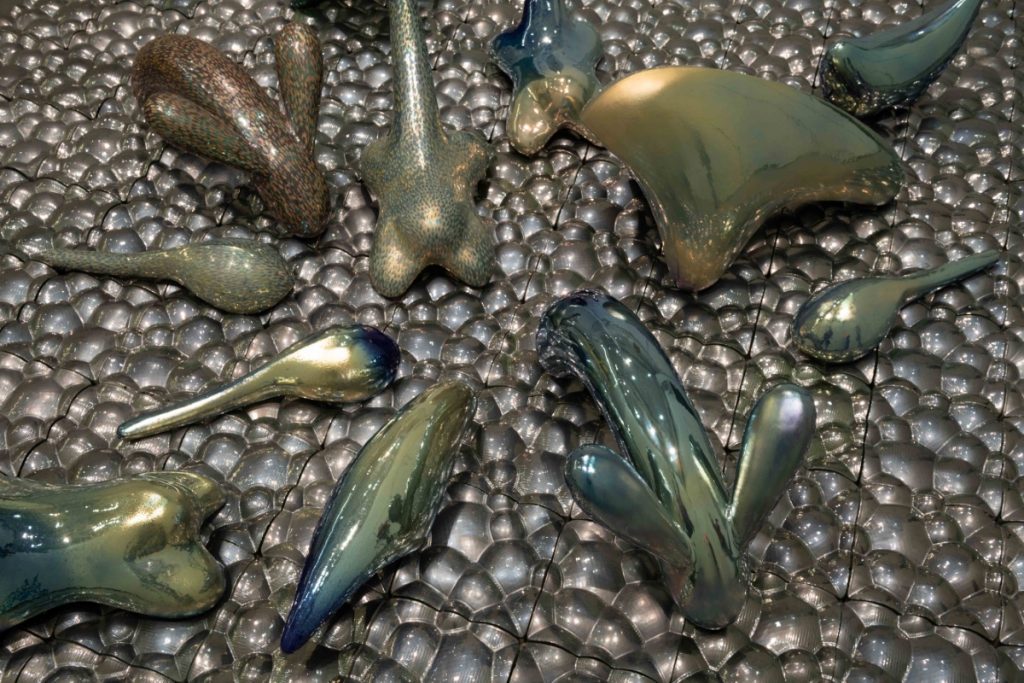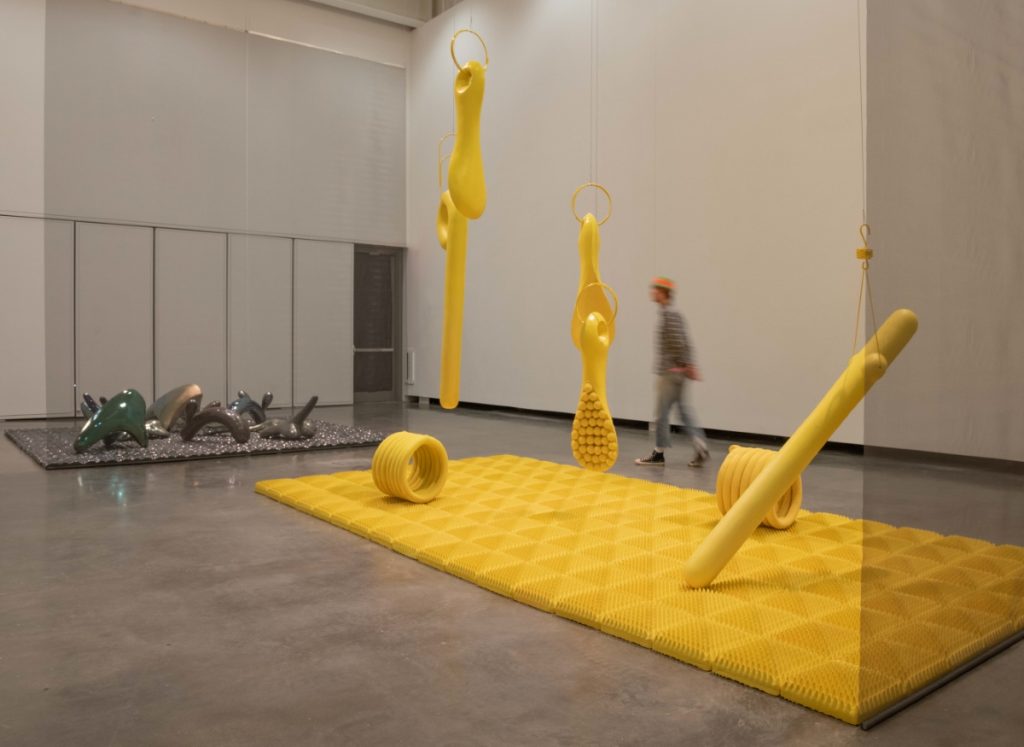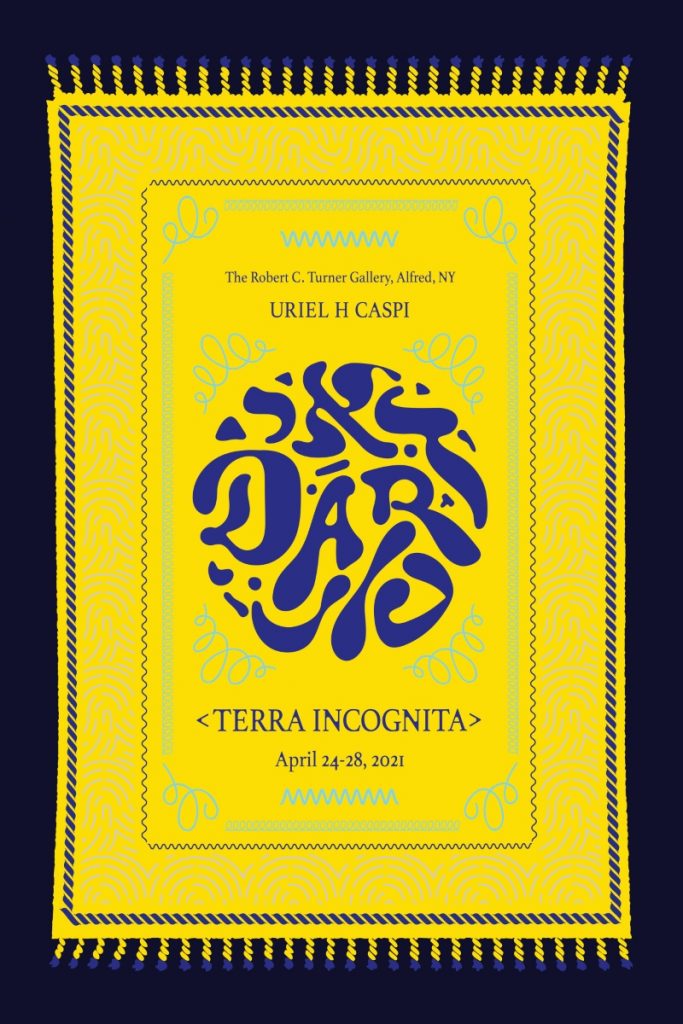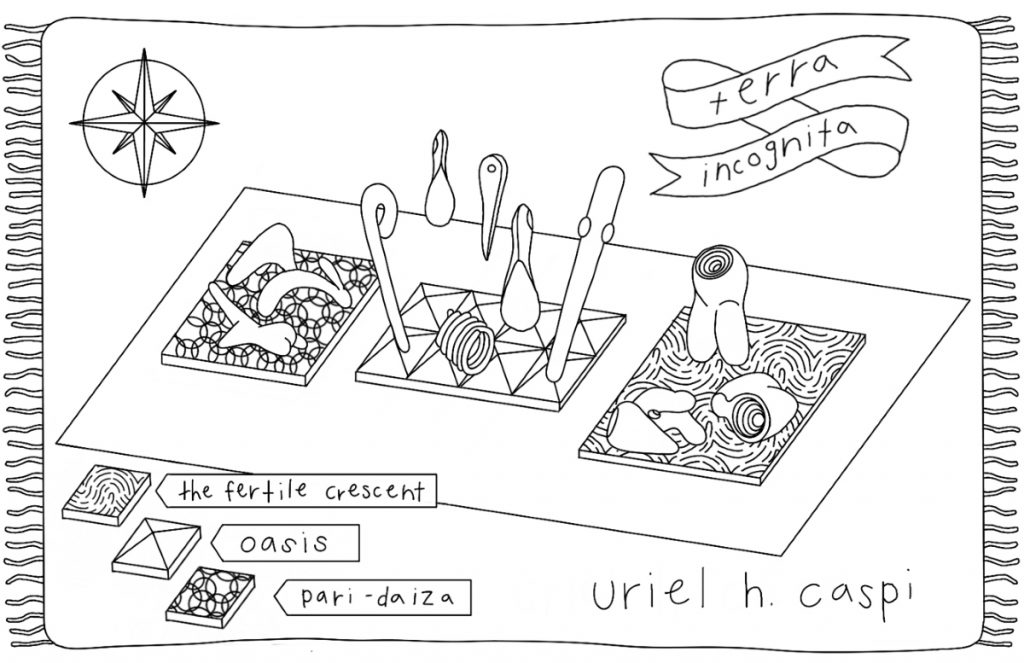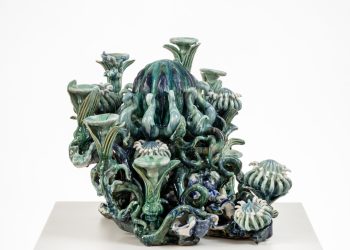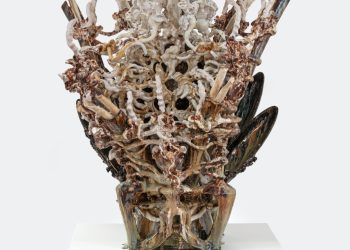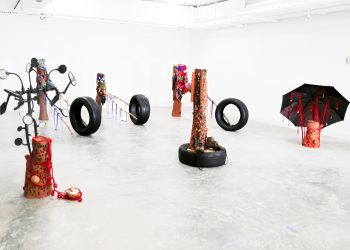Uriel Caspi: DAR – Terra Incognita, 2021
This is an invitation to explore the unknown territory of “DAR” -a visionary space that encapsulates the fundamental conceptions of “space”, “time” and “matter” through the eyes of the artist. Visually inspired by archeological remnants from the Middle East and the aesthetics of future design, installations of large-scale ceramic sculptures operate as platforms for artistic interaction between the artist and the viewer. The territory of the domestic space is used as a case study, to examine the ‘habitat’ versus the ‘domicile’ and how personal, local and universal ideas fluctuate and synthesize together.
Dar is a Semitic language root that has multiple meanings:
- In Hebrew, the word is used as an alternative verb “to dwell” and linked to the word “apartment”.
- In Arabic and other Middle Eastern dialects, the word is mainly used to describe the idea of domesticity as in the words “house” and “family”. The term is also geographically used to define territory, region, country and habitat.
The first thing you encounter when you enter the gallery is the first installation “The Fertile Crescent” that mainly deals with the metamorphosis of the human body, and the artistic relationship between the body and the ceramic vessel. As a ceramic artist I’m moving on two parallel spectrums: the vessel-the sculpture-the body, and the other one is “human-posthuman-hybrid”. The spectrums allow me to research the morphology of the body and to investigate the transformation of clay into a sculpture.
The sculptures are staged on a bed of 400 tiles, systematically made with the repetitive pattern of my index fingerprint. At first look, the wavy grooves seem like an ornamental or architectural element. However, a careful inspection would reveal the fingerprint impression and the friction ridges. The fingerprint impression, a unique body identification, has been modified into architectural elements to provide an indirect interaction between the viewer and the artist’s personality.
The tiles are coated with Terra Sigillata made of local soil from the hills of Jerusalem. Terra Sigillata, usually translated as “sealed earth”, an ancient pottery technique from the Mediterranean basin which used to achieve glossy surfaces with red slip. In the project, local clay has been imported and processed into fine slip and applied on the tiles surfaces to achieve smooth-silky sheen. The colors range of the terra-sigillata surface shifts from desert sand to earthy tones, and could be referred to the local landscape of the Judaean Desert. Beside the visual benefit, it delivers the concept of locality and emphasizes the spiritual connection of the potter to his land of origin.
The sculptures are built in a special technique called ‘Jarre a la corde’ – roughly translated as “pot on the rope”, a traditional pottery technique originated from the Mediterranean. Over the years, this special technique almost vanished, due to extensive industrialization in Europe. Today, only a few potteries in the south of France and Pays Basque are still practicing the technique. In the last five years I have been researching and preserving this ancient craft, and developed it as a major sculpting technique. That connects me to the title of this installation “the fertile crescent” which is known as the region in the Middle East where the western civilization began and culture, architecture and ancient crafts evolved.
The middle installation in the gallery is the Oasis. In ancient Coptic language it means a place of dwelling, this is a fertile area that provides the habitat conditions for animals and humans. Inspired from the intense colors of the desert, the saturated yellow-colored monochromatic ceramic installation invites the viewer to dwell within the space.
As the oasis is considered as a place of living, forms and devices from the domestic space are converted into sculptural-architectural elements and pretend to set the conditions for subsistence. Commonplace still lifes from the domestic environment, man-made tools and mechanical devices are manipulated into semi-abstract objects. These symbolize the integral and constant influence on how the artist visually interprets the essence of the domicile. In the installation space, functional objects from the artist’s daily routine are enlarged into monumental scale and used as architectural elements to define the domestic territory.
Furthermore, the sculptures glazed in caution yellow are precariously hang above the spikey loan, and warn us of the sensitive balance and tensions within the domicile.
Moving to third Installation in the gallery, which in this case titled “Pari-daiza” – From Proto-Iranian “pairi” (around) and “daeza” (wall), a common term for “enclosed space” or specifically – a walled-in compound or garden, and known as the root for the word paradise.
Inspired by the geometrical plans of the Median gardens, the third installation suggests an imaginary habitat of flora and fauna. The habitat is a space where an organism makes its home. A habitat meets all the environmental conditions an organism needs to survive and thrive. In correlation to the habitat, the human’s domicile may meet and fulfill the complete conditions for subsistence, but not necessarily for sustenance.
Domesticated animals are converted into sculptural ceramic objects and inhabit the installation territory. In a reductive design process, a dog, a cat, a bunny, a bird and a mouse become semi-abstract objects that, beside their visual role, function as an intellectual trigger for the viewer to activate the space and to generate or simulate a narrative. As an artist I’m giving the viewer full autonomy. The viewer has the right to make up their own narrative, to refer motifs and ideas from their world and to cast them into the interpretation of the artwork. The position of the viewer within the artwork is very dominant and in this case the viewer is part of the artwork itself.
The reflective surface of the sculptures and the tiles acts like a mirror which enables the viewers to see themselves within the work.
The surface is coated with a layer of formulated glaze with precious metals, which appears as reflective-iridescent luster after the firing in the kiln. Going back to the 6th century, the technique of luster glaze pottery developed in the Middle East as the alchemists attempted to produce gold. In this installation, the quality of the glaze is reflecting aesthetics from antiquity and visionary environment from the future at the very same time.
“Space is not something objective and real, nor a substance, nor an accident, nor a relation; instead, it is subjective and ideal, and originates from the mind’s nature in accord with a stable law as a scheme, as it were, for coordinating everything sensed externally.” Immanuel Kant
DAR – Terra Incognita has been exhibited at The Robert C. Turner Gallery, Alfred, New York, in April 2021.
OASIS, Uriel Caspi’s most recent solo exhibition is on view through October 16, 2021, at the Sculpture Space NYC.
Photos by Brian Oglesbee


